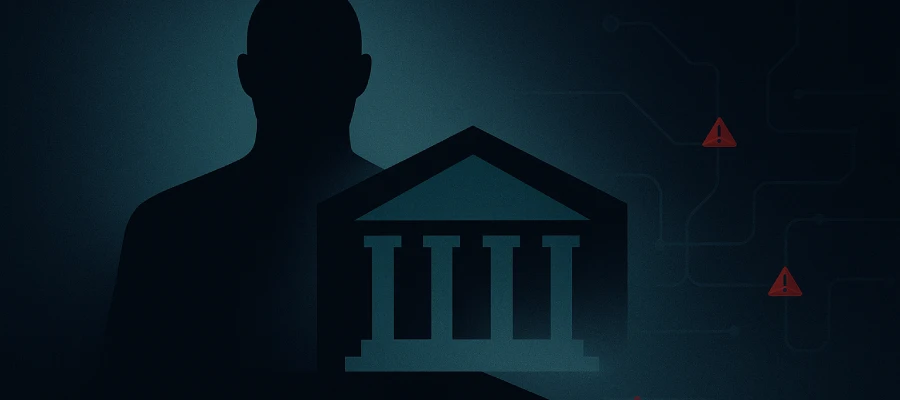The Shadow Banking System
The financial world you know (JPMorgan Chase, Bank of America, your local credit union) has a hidden counterpart. It’s a $65 trillion network called shadow banking, larger than traditional banking and critical to the global economy. In 2008, when this system faltered, it nearly brought down everything. Most people still don’t know it exists, yet it touches their mortgages, paychecks, and retirement funds every day.
Consider a hypothetical college grad, Sarah, working at a small logistics company in 2008. Payday came, and the checks didn’t clear. The boss said the company’s short-term loans vanished overnight. Sarah didn’t know it then, but she was caught in the shadow banking system, a network that moves money in ways banks don’t, without their rules or safety nets.
Shadow banking isn’t a bank in the traditional sense. It’s a web of institutions doing bank-like things: lending, borrowing, and moving money. Money market funds, investment banks, insurance companies, and pension funds are key players. They don’t take deposits or follow banking regulations, but at the same time, they really kind of keep the economy running (currently). Picture traditional banks as the visible pipes carrying water to your house. Shadow banking is the vast underground system moving even more water, unnoticed until it bursts.
Money market funds act like savings accounts, pooling cash to buy short-term securities. Your brokerage account’s “cash” often sits there, not in a bank, and it’s not FDIC insured. Investment banks, like Lehman Brothers before its collapse, borrow from other institutions to trade or lend, not from depositors. Insurance companies, like AIG in 2008, invest premiums in ways that resemble lending. Pension funds and hedge funds lend billions, creating credit across the system. The repo market, where firms lend to each other overnight using securities as collateral, moves trillions daily.
Your life is tied to this system. Your mortgage? Likely owned by a pension fund or insurance company, not the bank you pay. Your job? Companies borrow from commercial paper markets, a shadow banking staple, to cover payroll. If those markets freeze, paychecks bounce, as Sarah learned in 2008. Your investments? Money market funds and credit card debt, packaged and sold to investors, are shadow banking products. They’re not as safe as you might think. And this is especially true during an economic upheaval.
Why did this system grow so massive? Our ignorance allowed it. Banks face strict rules, so shadow banking fills gaps. Global demand for safe places to park cash outstripped bank deposits. New financial tools and globalization made it easier to move money across borders. Low interest rates pushed investors into shadow banking for better returns. By 2021, the Financial Stability Board pegged shadow banking at $63 trillion globally, bigger than traditional banking in many countries.
The 2008 crisis showed its dangers. Lehman Brothers relied on repo markets for daily funding. When lenders lost confidence, they stopped rolling over loans. Lehman had to sell assets fast, tanking prices and sparking a chain reaction. Money market funds and commercial paper markets froze. Businesses couldn’t borrow, and the economy stalled. Traditional banks had deposit insurance and Federal Reserve support. Shadow banks didn’t, and the system unraveled.
What bothers me is that many didn’t learn the lesson. You’d think shadow banking would have faded after 2008, but it’s bigger now than ever. We are heading in the wrong direction. The excuse is that the economy needs its credit and liquidity. Regulations made traditional banking costlier, pushing activity to the shadows. Investors want the high yields and services it offers. And just like an opioid that makes you feel good, sometimes the damage and cost are ignored until it’s too late. New tech keeps creating new ways to lend and borrow outside banks.
The risks remain. In fact, I would argue that it’s worse than ever. Moreover, shadow banks rely on market confidence, not government backstops. If one fails, it can drag others down. They amplify booms and busts, fueling bubbles in good times and crashing hard in bad ones. Sure, oversight is a little better than in 2008, but gaps persist. The system’s complexity makes it hard to track, and regulation is ALWAYS way behind tech.
This matters to you. Your “safe” money market fund could lose value. Your company’s funding could vanish overnight. Financial crises don’t always start in banks anymore. They can emerge from this hidden web. Knowing this helps you make smarter choices about where to park your cash or how to plan for retirement. It also makes you a more informed voter when financial regulations come up.
Shadow banking isn’t going away. Of course, neither is the opportunity it provides. A perspective issue? Fintech, like peer-to-peer lending and crypto, is creating new forms. It’s funding clean energy projects that most banks avoid. Emerging markets are building their own shadow systems. Regulators keep chasing it, but it evolves faster. With that comes some good and some bad.
Anyway, what I want you to understand is that the system is like the wiring in your house: essential, invisible, and only noticed when it sparks. In 2008, a lot of people saw the fallout when it did. A lot of your money lives in this shadow today. Understanding it means you’re ready when the lights flicker.
Keep learning. You might also like:




